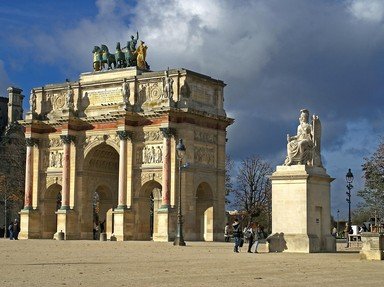Quiz Answer Key and Fun Facts
1. Fleeing French General Junot, to where did Prince Regent Dom João of Portugal escape?
2. In 1808, Charles IV of Spain abdicated his throne, elevating his son, Ferdinand VII, to the throne of Spain. Napoleon soon afterwards forced both father and son to turn over their right to rule to him. Who did Napoleon elevate to be King of Spain?
3. Francisco Goya's Second of May 1808 and Third of May 1808 are companion paintings depicting what events of the Peninsular War?
4. Arthur Wellesley arrived in Portugal in April 1809 and took command of the British forces there, reinforcing them and the Portuguese with fresh troops. Wellesley then drove the French out of Portugal and marched to link up with Spanish General Cuesta in Spain. What was the first battle in Spain of this campaign?
5. After his first battle in Spain, in 1810/11, Wellesley next defended a position outside of Lisbon, called the lines of Torres Vedras, of which there were four. To which line did the subsequent French attack reach?
6. Wellesley advanced into Spain in January 1812 and captured a fortress town during that month. What was the name of the town?
7. The 60th and the 95th rifles formed part of Wellesley's army in the Peninsular War, and both carried the Baker rifle, a slow loading but far more accurate and longer range weapon than the infantry's Brown Bess smoothbore musket. Companies belonging to light infantry battalions of what elements of the British Army (officially) carried the Baker rifle?
8. Wellesley again triumphed in a battle in July 1812 in the Battle of Salamanca, in which the French suffered 13,000 casualties and the British lost 5,000. Who was the leader of the French forces?
9. At the Battle of Vitoria in June 1813, one of the largest and most important battles of the Peninsular War, King Joseph was soundly defeated, but the British did not follow up their pursuit of the French. What held them up?
10. In November 1813 Wellesley drove the French from their final positions in Spain (other than Catalonia), and defeated their forces under Marshal Soult at the Battle of Nivelle in France. A key event of the battle was the attack on a fort by the 52nd light infantry, supported by the 95th Rifles. Who led the 52nd light infantry?
Source: Author
cyeomans
This quiz was reviewed by FunTrivia editor
bloomsby before going online.
Any errors found in FunTrivia content are routinely corrected through our feedback system.
